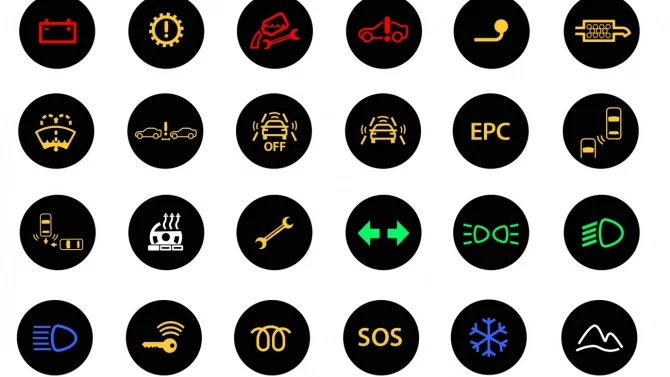...
By Marek Petrus
The Czech crown looks to be in danger of losing its status as one of the world's most popular funding currencies.
Czech rates, at 3 percent the lowest in the European Union, lured investors earlier this year into using the crown along with the Japanese yen and the Swiss franc as a cheap vehicle for funding carry trades.
The prevalence of these crown selling strategies -- aimed at profiting from a yield pickup, or carry, on investing in high-yield currencies and assets -- kept the crown weak for the better part of this year.
But this month's sharp sell-offs in global equities and emerging markets after months of strong gains have highlighted the crown's quality as a safe haven currency in emerging markets across Europe, the Middle East and Africa.
With investors' anxiety over risky investment bets rising and high-yield currencies falling out of vogue, the crown has rallied 3 percent in a forceful recovery from 15-month lows against the euro since end-June. In contrast the Hungarian forint - central Europe's high-yielder - has fallen 4.8 percent.
"The crown's days as a funding currency seem to be coming to an end," said Wike Groenenberg, head of local emerging markets strategy at Citigroup. "There are still some people out there holding crowns as a funding currency, but we are not seeing additions to those positions."
The crown rose to a near five-month high of 27.840 per euro on Wednesday.
Prospects for the crown carry trade, vaguely estimated at $5 billion and more, will look even worse if the Czech central bank (CNB) raises official rates to rein in buyoant domestic demand and the crown resumes its appreciation trend as widely expected.
The crown's fortunes are going to increasingly rest on the fundamental story of economic convergence rather than on swings in investors' risk aversion.
Analysts said that even if investors regain appetite for risk, the crown will lose its allure for carry trades as it is propped up by an entirely different set of fundamentals from the yen or the Swiss franc, the two bellwether funding currencies.
While Japan and Switzerland are big, mature economies, the post-communist Czech Republic is the midst of a fundamental process of economic convergence with the richer countries in the core of the European Union, which it joined in 2004.
"We have gone through an episode when crown carry trades seemed to be profitable. The crucial moment will come in September when liquidity returns to markets and people get a clearer sense of the outlook for euro zone and U.S. interest rates," said Jan Vejmelek, an economist at Komercni Banka.
"Investors should demand a certain risk premium for holding crowns, so any signs of a slowdown in the pace of euro zone rate hikes and nearing U.S. rate cuts would undermine the lure of crown carry trades."
The Czech economy expanded at a 6.4 percent annual clip in 2006, more than double Switzerland's 2.7 percent pace and nearly treble Japan's 2.2 percent. Convergence with richer economies is fuelling a crown appreciation adverse to carry trade investors.
Markets expect accelerating consumption and growing wages in the buyoant economy to prompt CNB policymakers to raise its policy rate to 4 percent within a year, again eating into the rate differential carry trades exploit.
"Our estimates show a continuation of the fundamental crown appreciation," said David Navratil, analyst at Ceska Sporitelna.
"If the crown stays for a longer time out of trend on the weaker side, the small open economy pass-through would lead the CNB to increase rates more to bring inflation down, knocking out carry trades from the opposite side."
The crown has borne the brunt of the economic convergence in prices and incomes toward higher euro zone levels over the past seven years, rising 5.5 percent on average annually between 2004-2006 in nominal terms against the euro.
Investors betting on a further long-term crown firming have a powerful ally in the central bank.
CNB policymaker Mojmir Hampl told Reuters last week the crown was bound to extend its firming trend into the next decade if monetary policy remains credible and the inflation premium over the euro zone disappears [ID:nL09633142].
The CNB estimates the crown's real equilibrium appreciation at 3.0-3.5 percent. That is more than enough to wipe out any positive carry on holding euros or dollars versus crowns if low inflation translates into a sharper nominal crown rise again.
[PRAGUE/Reuters/Finance.cz]




 Řidička uvízla na železničním přejezdu, rychlík ji minul jen o kousek
Řidička uvízla na železničním přejezdu, rychlík ji minul jen o kousek
 Brzdná dráha delší až o deset metrů. Hlavně levné pneumatiky z východní Asie jsou pro řidiče rizikové
Brzdná dráha delší až o deset metrů. Hlavně levné pneumatiky z východní Asie jsou pro řidiče rizikové
 Test Renault Symbioz: S novým hybridem jezdí svižně a se spotřebou legendárního té-dé-íčka
Test Renault Symbioz: S novým hybridem jezdí svižně a se spotřebou legendárního té-dé-íčka
 Kdo nezvládne tento kvíz za plný počet, ten si dost možná auto zničí. Kontrolky jsou totiž základem komunikace mezi autem a řidičem
Kdo nezvládne tento kvíz za plný počet, ten si dost možná auto zničí. Kontrolky jsou totiž základem komunikace mezi autem a řidičem
 Nákup ojetiny jako rizikový podnik. Každá druhá ojetina ihned potřebuje nečekanou opravu za mnoho tisíc
Nákup ojetiny jako rizikový podnik. Každá druhá ojetina ihned potřebuje nečekanou opravu za mnoho tisíc
